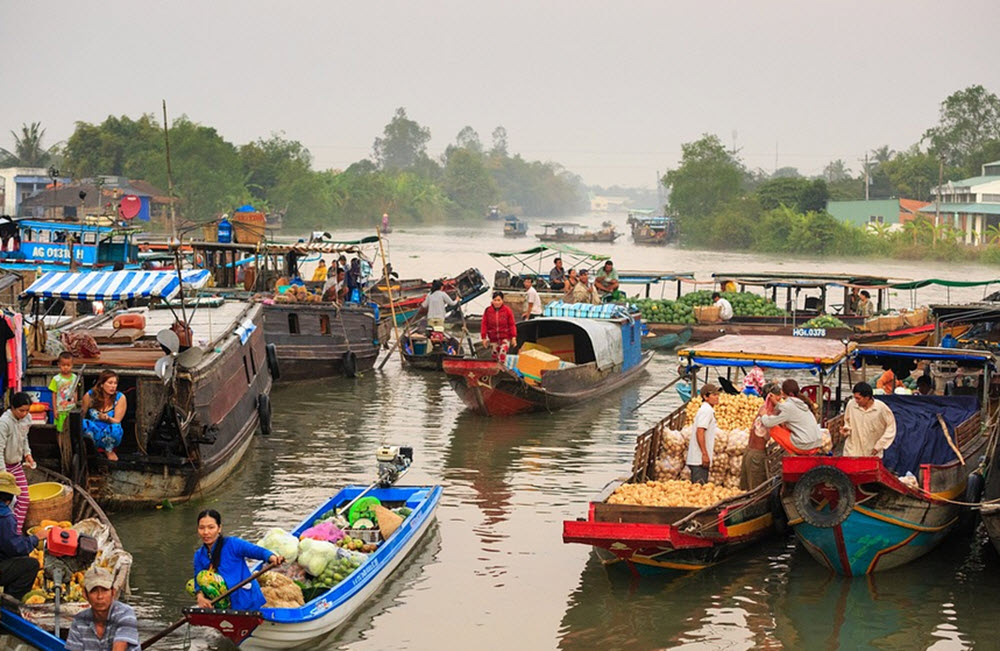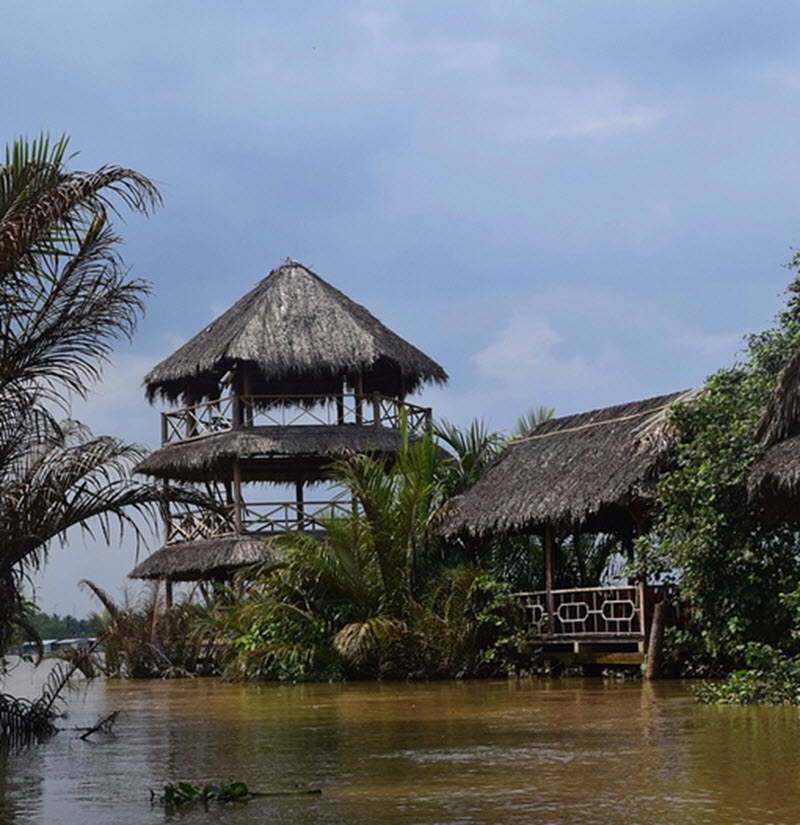The Mekong River, one of the world’s major rivers, flows through six countries in Southeast Asia: China, Myanmar (Burma), Laos, Thailand, Cambodia, and Vietnam. Originating from the Tibetan Plateau and stretching over 4,350 kilometres (about 2,703 miles) to its delta in Vietnam, the Mekong is the 12th longest river in the world and the 3rd longest in Asia. It plays a critical role in the region’s geography, ecology, culture, and economy.
The river’s journey begins in the Tibetan Plateau, flowing through China’s Yunnan province, where it’s known as the Lancang River. It then meanders through the Southeast Asian countries of Myanmar, Laos, Thailand, Cambodia, and finally Vietnam, where it empties into the South China Sea through a complex delta known as the “Nine Dragons” (Cửu Long).
The Mekong River is a lifeline for millions of people in Southeast Asia, embodying the region’s dynamic relationships between nature, culture, and development. Balancing the needs of economic growth with environmental conservation and equitable resource distribution is crucial for the future of the Mekong and the well-being of the diverse communities that depend on it. As such, the river stands at the centre of ongoing debates about sustainable development in one of the world’s most vibrant and rapidly changing regions.

Contents
Cultural significance
Culturally, the Mekong has been central to the development of the civilizations along its banks. It influences local traditions, festivals, and religious practices.
Ecological significance
The Mekong River Basin is one of the most biodiverse areas in the world, second only to the Amazon. It is home to numerous species of fish, birds, reptiles, and mammals, many of which are endemic to the region.The Tonle Sap Lake in Cambodia, a UNESCO Biosphere Reserve, is a unique ecological phenomenon directly connected to the Mekong. It significantly increases in size during the monsoon season due to the reverse flow of water from the Mekong.
Economic significance
The Mekong River is vital for the economies of the riparian countries, supporting activities such as agriculture, fishing, and transportation.
The river supports one of the world’s largest inland fisheries and is crucial for the livelihoods of millions of people.
The river’s basin is a key area for rice production, particularly in Vietnam and Cambodia, which are among the world’s largest rice exporters.
The river is also a major tourist attraction, offering scenic cruises that provide insight into the life and culture of Southeast Asia.
History
The earliest known settlements along the river have been dated to 210 BCE. The earliest recorded civilization here was the 1st century CE Indianised-Khmer culture of Funan in the Mekong Delta.
This river tend to be difficult to navigate, which means that rather than connect the people living along it, it served as a barrier. This does not mean that the region was isolated from the rest of the world, and archeologists working at the Oc Eo site near An Giang have found coins from the Roman Empire.
The Indianised-Khmer culture was succeeded by the Khmer culture Chenla around the 5th century CE, and the Khmer Empire of Angkor is considered the last major Indianzed state in the region. After the collapse of the Khmer empire, the Mekong River became a frontline between the emerging powers Siam and Tonkin.
The first known European to visit the Mekong was António de Faria, a Portuguese man who arrived here in 1540 CE. Over the centuries, various European powers and organizations sporadically reached out to the region for trade, exploration or missionary work, but the area remained largely unknown in Europe.
In the mid-1800s, this changed dramatically, as France invaded the area, occupying Saigon from 1861 and establishing a protectorate over Cambodia in 1863. This marked the start of more serious European exploration of the Mekong, including the 1866-1868 French expedition that went as far upstream as Yunnan. They reported back to the French authorities that the river had too many falls and rapids to be useful for navigation.
The first known European to visit the source of the Mekong River was the Russian explorer Pyotr Kuzmich Kozlov, who got there in the year 1900 and later wrote a book describing the upper reaches of both the Mekong, the Yangtze and the Yellow River.

Challenges and controversies
The Mekong River faces several challenges, including environmental degradation, deforestation, overfishing, and the impacts of climate change. Efforts to manage the river’s resources are complicated by the differing interests of the countries through which it flows.
One of the most contentious issues is the construction of hydropower dams, primarily in the river’s upper reaches in China and Laos. These dams have significant implications for water flow, sediment transport, and fish migration, affecting food security and livelihoods downstream.
Another issue is explosives. During the wars in Indochina in the 1970s, huge amounts of explosives – including entire loaded barges – were sunk in the Cambodian part of the Mekong. This is a danger to people using this part of the river, and hampers construction of bridges and irrigation systems.
The Mekong River Commission (MRC), established by Laos, Thailand, Cambodia, and Vietnam in 1995, seeks to promote sustainable development and coordinate river management. However, the effectiveness of such initiatives is often challenged by national priorities and the absence of China and Myanmar/Burma from the commission. It should be noted, however, that China and Myanmar have been dialogue partners with the MRC since 1996, and in 2000 China, Myanmar, Laos, and Thailand managed to reach an agreement regarding commercial navigation on the river and efforts to strengthen trade along the upper parts of the Mekong.
